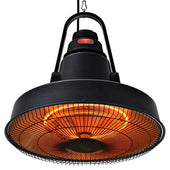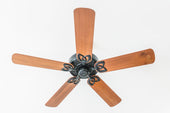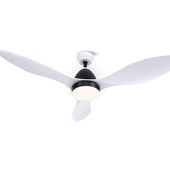Introduction: The Evolution of Floor Rugs Through Time
Floor rugs boast a history that stretches back thousands of years, where their functional and aesthetic purposes intertwined with human innovation. The earliest known examples of rugs date to ancient civilisations in regions such as Mesopotamia, Persia, and Egypt, designed primarily for insulation and comfort. Middle Eastern artisans pioneered rug-weaving techniques, creating intricate patterns that reflected cultural identity and religious symbolism.
During the Medieval era, rugs became symbols of wealth, valued for their craftsmanship and exotic appeal. The Renaissance saw Europe’s growing appreciation of oriental rugs, often showcased in art and aristocratic homes. Modern advancements introduced new materials and manufacturing methods, diversifying rug designs globally.
The Origins: Ancient Civilisations and the Birth of Rug-Weaving
Rug-weaving traces its roots to ancient civilisations that understood the practicality and artistry of textiles. It is believed that the first rugs emerged in Mesopotamia and Central Asia over 2,000 years ago, where nomadic tribes began crafting woven textiles to shield themselves from harsh climates. Early examples of rug-weaving often incorporated natural fibres such as wool, During Days cotton, and flax, prized for their durability and warmth.
Technological advancements, like the invention of the vertical loom, revolutionised rug production and allowed for intricate patterns and designs. Civilisations like Persia, Egypt, and Anatolia are credited with refining weaving techniques. Their use of vibrant dyes and symbolic motifs established rugs as cultural and artistic treasures, reflecting societal values, religious beliefs, and everyday life.
From Necessity to Art: Rugs as Functional and Aesthetic Pieces
Floor rugs originally served essential purposes, offering insulation, comfort, and protection from cold, hard surfaces. Early societies crafted rudimentary mats from animal hides or plant fibres to address practical needs. Over time, these simple creations evolved into intricate works of art, reflecting the skill and creativity of the artisans.
- Functional Role: Rugs soften spaces, dampen noise, and provide thermal insulation.
- Aesthetic Role: Their intricate patterns and vibrant colours have made them symbols of cultural identity, status, and storytelling.
Transitioning from practicality to beauty, rugs became symbols of cultural expression, contributing to both interiors and heritage.
Symbolism and Storytelling: The Cultural Narratives Woven into Rugs
Rugs have long served as vehicles for storytelling, embodying a tapestry of cultural symbols and narratives. Each design element often holds a specific meaning, reflecting the traditions, beliefs, and daily life of the weavers. In Persian rugs, for instance, motifs like pomegranates symbolise fertility, while flowing water patterns represent eternal life. Native American rugs feature geometric designs that convey spiritual concepts and tribal identities.
Colours play a crucial role in storytelling as well. Reds may signify vitality, blues can evoke protection, and earth tones connect themes of nature and balance. These rugs not only serve as functional items but also as historical artefacts, offering a window into cultural heritage.
The Rise of Persian Rugs: A Historical and Artistic Legacy
The emergence of Persian rugs dates back to ancient Persia, where artisans began developing intricate weaving techniques. Over centuries, these rugs came to symbolise the region’s cultural identity, admired for their elaborate designs and rich colours. Early examples, such as the Pazyryk Carpet, demonstrate the skill of weavers long before modern textile advancements.
Persian rugs gained global prominence through trade routes like the Silk Road, connecting Persia to Europe and Asia. Their motifs often depict floral patterns, geometric shapes, and scenes from nature. Each rug tells a distinct story, with colours and symbols reflecting local traditions or religious influences.
European Influence: How Rugs Shaped the Aesthetic of Western Interiors
The integration of rugs into European interiors began significantly during the Renaissance, fuelled by increased trade with the East. By importing Persian, Turkish, and Caucasian rugs, European elites used these treasures as status symbols, often draping them over tables and chests to signify wealth. The intricate designs and fine craftsmanship influenced local textile production, inspiring the growth of rug-weaving industries in regions like France and Spain.
By the 18th century, rugs became central to Western interior design, complementing Baroque and Rococo styles. Their role evolved from decoration to functional floor coverings during the Victorian era, blending durability with aesthetic appeal.
Rugs as Status Symbols: Wealth, Power, and Prestige
Throughout history, rugs have symbolised wealth, power, and social standing in various cultures. In ancient Persia, intricately woven carpets were crafted from luxurious materials like silk and gold threads, indicating a ruler's authority and aesthetic refinement. European nobility, especially during the Renaissance, displayed elaborate Oriental rugs on walls or tables instead of floors to preserve their beauty and showcase affluence.
Some rulers in the Ottoman Empire exchanged rare rugs as diplomatic gifts, cementing alliances and projecting power. In the modern era, collectors and connoisseurs prize handcrafted rugs, viewing them as tangible representations of cultural heritage and craftsmanship.
Handmade vs. Machine-Made Rugs: Tradition Meets Modernity
Handmade and machine-made rugs represent two distinct approaches to craftsmanship, each rooted in unique traditions and methods. Handmade rugs, woven or knotted by artisans, showcase intricate details achieved through manual labour. These rugs often utilise natural materials like wool or silk and carry cultural significance, with patterns reflecting regional heritage.
In contrast, machine-made rugs are industrially produced, employing power looms for consistent designs. Synthetic fibres like nylon or polyester are frequently used, enhancing durability and affordability. While handmade rugs focus on artistry and uniqueness, machine-made options cater to modern demands for accessibility and rapid production. Both types serve diverse aesthetic and functional needs.
The Global Impact: How Rugs Connect Cultures Across Continents
Rugs have long served as mediums for cultural exchange, bridging continents through trade, craftsmanship, and storytelling. Each region’s weaving traditions often blend indigenous techniques with influences from afar, reflecting historical connections. Persian carpets, for instance, exhibit motifs inspired by Islamic design while also incorporating patterns shared by neighbouring regions.
Trade routes like the Silk Road facilitated the exchange of rugs, introducing diverse styles to distant markets. European tapestries, influenced by Asian weaving methods, highlight this cross-cultural impact. Today, modern global commerce ensures that rugs produced in one country often find homes across the world, showcasing universal appreciation for textile art.
Rugs in Contemporary Design: Blending Heritage with Modern Trends
Contemporary design embraces floor rugs as essential elements for creating visually engaging spaces. By merging traditional craftsmanship with modern aesthetics, rugs bridge the gap between cultural heritage and current trends. Patterns inspired by ancient motifs are reimagined in minimalist or abstract forms, appealing to diverse tastes.
Modern rugs may use innovative materials such as recycled fibres or synthetic blends, aligning with sustainability values. Bright colours and unconventional shapes often redefine traditional notions, complementing eclectic interiors. Designers integrate these rugs to soften stark environments or provide focal points, ensuring functionality accompanies style. Transitioning seamlessly, these rugs celebrate heritage while adapting to today’s evolving design narrative.
Preservation and Sustainability: Keeping the Art of Rug-Making Alive
Efforts to preserve traditional rug-making techniques focus on safeguarding both heritage and craftsmanship. These practices often rely on handmade processes, including spinning, dyeing, and weaving, which today face threats from mass production and industrialisation. By supporting artisan cooperatives and fair-trade initiatives, communities contribute to sustaining rug-making traditions while ensuring fair wages for weavers.
Sustainability also plays a critical role. Use of natural fibres like wool, silk, and cotton, along with plant-based dyes, helps reduce environmental impact. Additionally, educational programmes in schools and workshops empower new generations to learn and carry forward these time-honoured skills.
Conclusion: Why Floor Rugs Remain an Enduring Cultural Icon
Floor rugs have transcended their functional purpose to become expressive symbols of cultural identity. Their deep roots in various traditions—from Persian artistry to the intricate patterns of Moroccan weaves—underscore their significance as storytelling mediums. Incorporating natural dyes, regional designs, and motifs, these creations reflect the heritage of their origin.
As societal values evolve, rugs remain an intersection of history, craftsmanship, and modern design, adapting to contemporary aesthetics while preserving their cultural essence. Through their enduring allure, they continue to occupy a unique space, connecting people to their past and adding artistic warmth to homes globally.



















































